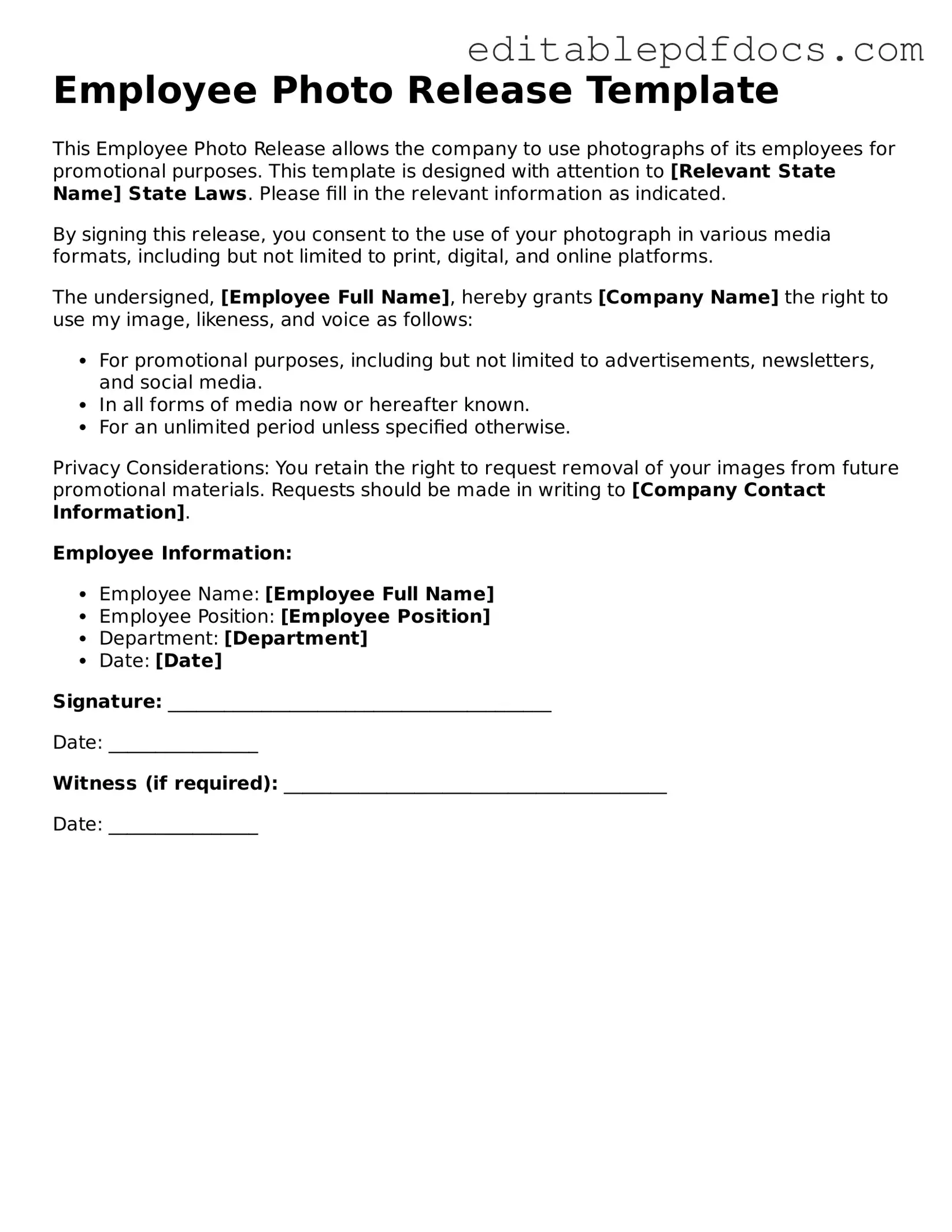Free Employee Photo Release Document
The Employee Photo Release form is a legal document that allows employers to obtain permission from employees to use their photographs for various purposes, such as marketing or promotional materials. This form ensures that employees are informed about how their images may be used and provides a clear record of consent. Understanding the importance of this form can help protect both the employer and the employee in the realm of image rights.
To ensure compliance and clarity, consider filling out the form by clicking the button below.
Open Editor Now
